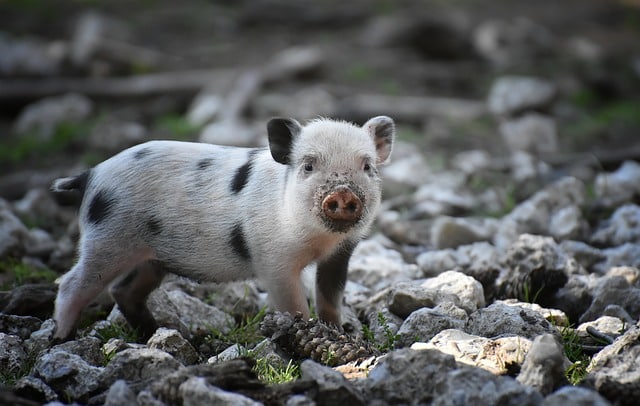
A small tail, like that of pigs, is called a tail.
The concept of rabillo , diminutive of tail , has several uses. The first meaning mentioned by the Royal Spanish Academy ( RAE ) in its dictionary refers to a small branch that is responsible for supporting the fruit, flower or leaf of a plant.
in botany
Tail, in this sense, is what is known in the field of botany as a nipple . The term is also used to name different plant species, such as tares (belonging to the grass family group and characterized by the toxicity of its seed flour) and hyssop (a medicinal and aromatic herb).
Continuing with plants , the dark spot that appears on the grain of a cereal when it is invaded by blight is called stem. This parasitic fungus generates a large number of blackish spores.
Lolium temulentum
Above we mentioned the plant called tares , one of the many common names that Lolium temulentum receives, to which are added, in addition to tail , balanco, baliyo, barrachuela, borerachera, bélago, buélligo, codeta, scarecrow, triguera, forage grass , jolio, llojo, luejo, fog , ramillo, vallico and yoyo .
Its inflorescence, that is, the way its flowers are arranged, is simple and extensive. Its spikelets alternate on the sides of the stem. Among its main differences with others of the same genus ( Lolium ) we can mention that it has an oval shape instead of lanceolate, that the extension of its glume is comparable to that of its spikelet and that its glumelas have a different consistency .
Hyssopus officinalis
Hyssop is another of the plants popularly known as rabillo . It is used as an aromatic herb, as well as medicinal. It is believed that it has accompanied human beings since pre-classical antiquity, and that the name we give it today derives from a combination of those given to it in Greek and Hebrew.
Just take a look at the twenty-four sacred books of Judaism known as Tanakh , written in ancient Hebrew, to find evidence of its applications as an aromatic herb . It also appears in the Bible , where John relates that the legionaries in charge of the cross used this plant.
Column end
The part of something that extends like a tail , on the other hand, is also mentioned as a tail. The tail, meanwhile, is the tail : the end of the spinal column in certain animals .
corner of the eye
The corner of the eye , finally, is the point where both eyelids meet. This sector can be called the angle of the eye . The expression “look with the corner of the eye” or with the “tail of the eye” refers to observing with dissimulation or caution .

Looking out of the corner of your eye is doing it in a hidden way.
Suppose a parent is trying to find out what their teenager is reading. To avoid asking him and to prevent the young man from feeling persecuted or invaded, try to discover him by looking out of the corner of your eye. Unlike the simple action of observing directly, in this case certain precautions are necessary, such as pretending that you are doing something else, looking in another direction, so that the child does not realize your intentions.
This means that when looking out of the corner of our eye we need to do other things to successfully complete our investigation. We can't just stand in the middle of a room, turn to the side, and then start glancing at another person and pretending they don't find out our intentions . Whether we pretend to be looking for something on a shelf, cleaning the furniture, reading the newspaper or thinking about our things while murmuring, we must necessarily resort to some complementary action to disguise it.
